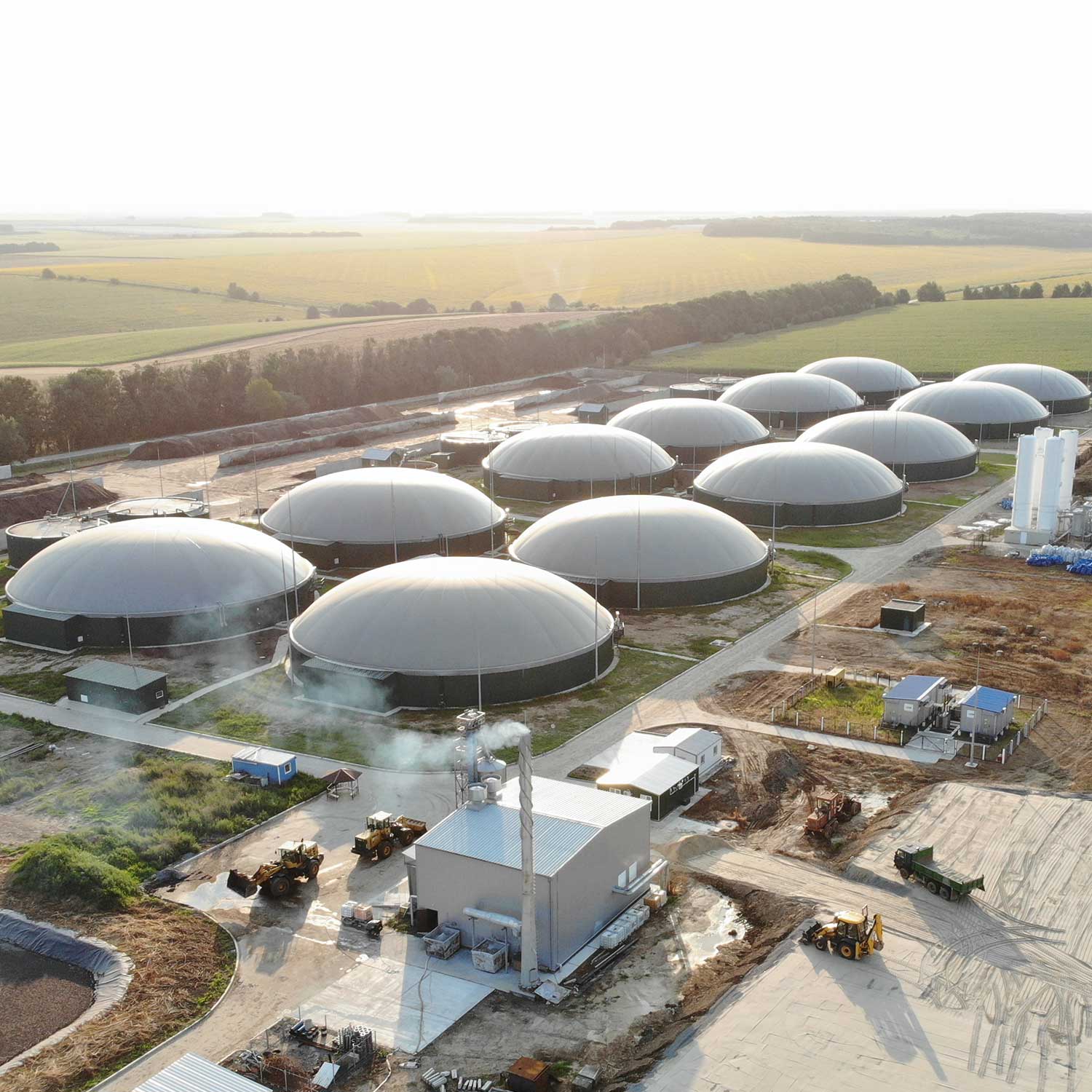
Methanization, a biological process based on the anaerobic degradation of organic materials, is a key solution for valorizing a wide range of waste while producing biogas and digestates. By contributing to the energy transition and sustainable resource management, this process transforms waste into renewable energy and natural fertilizers, reinforcing the circular economy. Among the components used in this process, iron hydroxide plays a crucial role in purifying biogas by capturing impurities such as hydrogen sulfide (H₂S). This article explores the various types of waste that can be valorized through methanization while highlighting the importance of iron hydroxide in optimizing the process.
Methanization: A waste valorization technology
Before delving into the specifics of valorized waste, it is essential to understand how methanization works. This process relies on the action of microorganisms that break down organic matter in anaerobic digesters. It produces two main by-products:
- Biogas: Composed primarily of methane (CH₄) and carbon dioxide (CO₂), biogas can be used as an energy source to produce electricity, heat, or even fuel (bioNGV).
- Digestate: A nutrient-rich residue used as a natural fertilizer in agriculture.
To ensure optimal methanization, controlling the quality of the biogas produced is essential. Adding iron hydroxide to the process helps remove contaminants, particularly H₂S, which is corrosive and toxic, while enhancing the performance of the facilities.
What types of waste can be valorized through methanization?
Methanization is a versatile technology capable of processing a wide variety of organic waste. Here are the main types of waste that can be valorized:
Agricultural waste
Farms generate abundant organic materials well-suited for methanization:
- Livestock effluents: Manure, slurry, and poultry droppings are rich in organic matter and nitrogen. These residues, often challenging to manage, find effective valorization in digesters.
- Crop residues: Corn stalks, leaves, and other agricultural by-products are easily degradable and enhance biogas production.
- Slaughterhouse waste: Fats, ground bones, and carcass remains, while requiring pretreatment, can also be valorized.
Agricultural methanization not only produces energy for farms but also reduces odor nuisances and generates digestates that can be used as natural fertilizers.
Food waste
Food waste represents a valuable resource for methanization, especially in urban and industrial contexts:
- Kitchen waste: Collected from households, restaurants, or cafeterias, these biowastes are rich in organic matter.
- Agri-food industry by-products: Peels, pomace, food fats, and expired products provide significant inputs for methanization units.
- Supermarket waste: Unsold items, particularly non-consumable fruits and vegetables, can be sent to suitable facilities.
The collection and valorization of food biowaste contribute to reducing landfill volumes while meeting legal requirements for source-separated waste management.
Industrial waste
Certain industries generate organic waste particularly suited for methanization:
- Industrial sludge: Derived from wastewater treatment in agri-food or chemical industries, these sludges are rich in organic matter.
- Processing waste: Dairy plants, breweries, and oil mills produce residual waters rich in organic materials, ideal for biogas production.
- Specific waste: Certain residues, such as used oils or industrial fats, can also be introduced into digesters after treatment.
These valorization processes enable industries to reduce waste management costs while producing reusable on-site energy.
Urban waste
Local communities produce large quantities of biowaste from daily activities:
- Household waste: Food scraps and garden waste collected from households can be sorted and sent to methanization units.
- Sewage sludge: Generated from domestic wastewater treatment, this sludge is a significant source of organic matter.
- Green waste: Grass clippings, dead leaves, and branches, while often used for composting, can also be methanized.
These wastes allow for the local production of renewable energy while reducing the environmental impact of municipalities.
Role of iron hydroxide in methanization
The use of iron hydroxide is essential in methanization to ensure the effective purification of the biogas produced. This compound primarily works by capturing hydrogen sulfide (H₂S), a toxic and corrosive gas present in raw biogas streams. Here are its main advantages:
- Improvement of biogas quality: Iron hydroxide effectively removes H₂S, ensuring that the biogas meets the standards for use in cogeneration or injection into natural gas networks.
- Prolongation of equipment lifespan: By limiting corrosion caused by H₂S, it reduces infrastructure maintenance costs.
- Ease of use: Iron hydroxide can be directly integrated into digesters or downstream treatment systems, making it an adaptable solution for operators.
The FERHYDROX product offered by CMMP is a benchmark in this field. With its high purity and excellent H₂S binding capacity, it optimizes the performance of methanization units. For more information, visit CMMP’s official website: FERHYDROX – CMMP.
What are the benefits of waste management through methanization?
The valorization of waste through methanization offers multiple benefits:
- Reduction of greenhouse gas emissions: By capturing methane produced during waste degradation, this process limits its release into the atmosphere.
- Production of renewable energy: The generated biogas can be used to produce electricity, heating, or fuel.
- Reduction of waste volumes: By diverting organic waste from landfills or incinerators, methanization decreases the environmental impacts associated with waste management.
- Creation of natural fertilizers: The digestates produced are used as agricultural amendments, contributing to soil sustainability.
Conclusion : What types of waste can be valorized through methanization?
Methanization is a key technology for valorizing a wide variety of organic waste, whether it originates from agriculture, households, industries, or municipalities. This process transforms these residues into biogas, a renewable energy source, and digestates, natural fertilizers. Adding iron hydroxide to the process, such as CMMP’s FERHYDROX product, ensures effective biogas purification, thereby optimizing facility performance.
By promoting the energy transition and circular economy, methanization represents a sustainable and efficient solution to address the environmental and energy challenges of our time.
CMMP Company
CMMP, a specialist in mineral materials since 1932, offers FERHYDROX, a high-quality iron hydroxide designed for methanization. This efficient product ensures optimal performance in capturing H2S, thereby contributing to sustainable and environmentally friendly industrial solutions.
Share this article
WHAT IS METHANIZATION?
IRON HYDROXIDE FOR METHANIZATION
This blog provides information on the valorization of organic waste, its transformation into renewable energy (biogas), and natural fertilizers. It highlights the crucial role of iron hydroxide in optimizing performance and purifying biogas.
